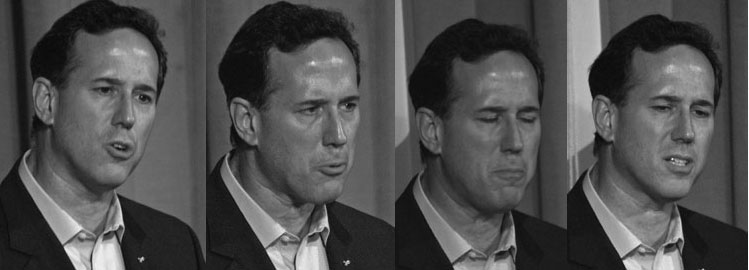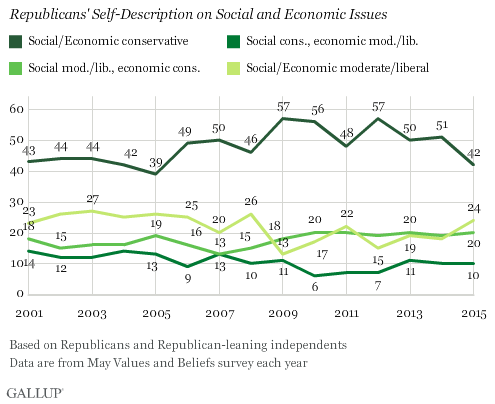
Conservative Republican Rick Santorum of Pennsylvania Running for President in Birmingham, Alabama, 2008: Glynn Wilson
By Glynn Wilson –
WASHINGTON, D.C. – The conservative Republican base is shrinking, as old racists die off.
According to the latest Gallup Poll data on the subject, the percentage of Republicans and Republican-leaning independents who are conservative on both social and economic issues rises steadily with age.
“An analysis of aggregated surveys conducted since the 2012 election shows that the size of the social and economic conservative group is twice as large among Republicans aged 65 and older as it is among those aged 18 to 29,” Gallup says in its latest report on the subject.
Conservative Republicans are vying for that older Republican constituency, a sizable portion of primary and caucus voters, but they risk alienating a broader base of potential Republican voters to turn out at the polls in the general election.
The percentage of Republicans and Republican-leaning independents who describe themselves as both social and economic conservatives has dropped to 42 percentage overall, Gallup says, the lowest level measured since 2005. Twenty-four percentage of Republicans see themselves as moderate or liberal on both social and economic issues. Another 20 percentage say they are moderate or liberal on social issues, more conservative on economics.
“These trends show not only that Americans as a whole have become less likely to identify as social or economic conservatives, but also that Republicans’ views are changing along the same lines,” Gallup says. “This change in recent years has been significant.”
The percentage of Republicans identifying as conservative on both dimensions has dropped 15 percentage points since 2012, largely offset by an increase in the percentage who identify as moderate or liberal on both dimensions.
Gallup’s Implications
The recent shift in how Republicans view themselves ideologically may have significant implications for the coming Republican presidential nomination fight, according to Gallup, particularly in terms of how the candidates will try to position themselves to maximize their appeal.
“Republican candidates are dealing with a party base that is today significantly more ideologically differentiated than it has been over the past decade,” Gallup says.
A Republican candidate positioning himself or herself as conservative on both social and economic issues may appeal to less than half of the broad base of rank-and-file party members.
“This opens the way for GOP candidates who may want to position themselves as more moderate on some issues, given that more than half of the party identifiers are moderate or liberal on social or economic dimensions,” Gallup says.
The caveat in these campaign decisions is that not all Republicans are involved in the crucial early primary and caucus voting that helps winnow the pack of presidential candidates down to a winner. Ideology on both social and economic issues is strongly related to age, and primary voters tend to skew older than the overall party membership.
“This could benefit a more conservative candidate in the primary process, but that advantage could dissipate in the general election,” Gallup says.
On the other hand, Democratic candidates will be dealing with party identifiers who are mostly moderate or liberal on social and economic issues, with a significant divide between these two groups.
Survey Methods
Results for the most recent Gallup poll are based on telephone interviews conducted May 6-10, 2015, with a random sample of 1,024 adults, aged 18 and older, living in all 50 U.S. states and the District of Columbia. For results based on the total sample of national adults, the margin of sampling error is plus or minus 4 percentage points at the 95 percentage confidence level.
Results for the aggregated Gallup polls conducted in 2013-2015 are based on telephone interviews with a random sample of 3,587 adults, aged 18 and older. For results based on this sample, the margin of sampling error is plus or minus 2 percentage points at the 95 percentage confidence level. All reported margins of sampling error include computed design effects for weighting.















Since the mainstream Democrat party is looking like the 90s republican party of the Bill Clinton administration, can we predict that the long term trend will be the steady extinction of the gop, with the Democrats becoming the new conservative-liberal bloc, opposed by a far right libertarian tea party minority and a possible new progressive socialist liberal-left as in Bernie Sanders? Karl Rove could serve his masters on the common ground of Hillary capitalism.